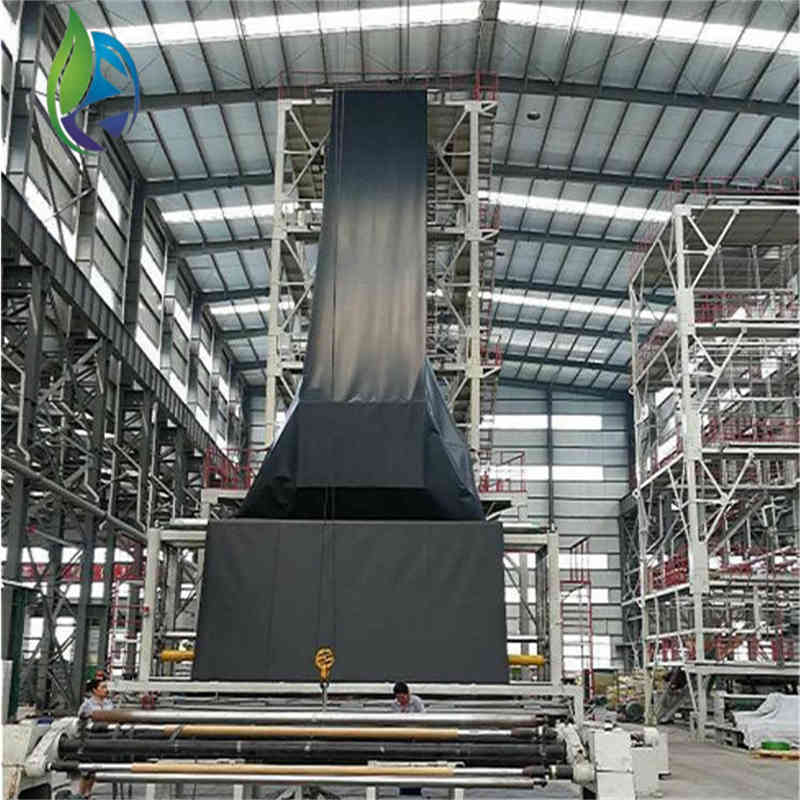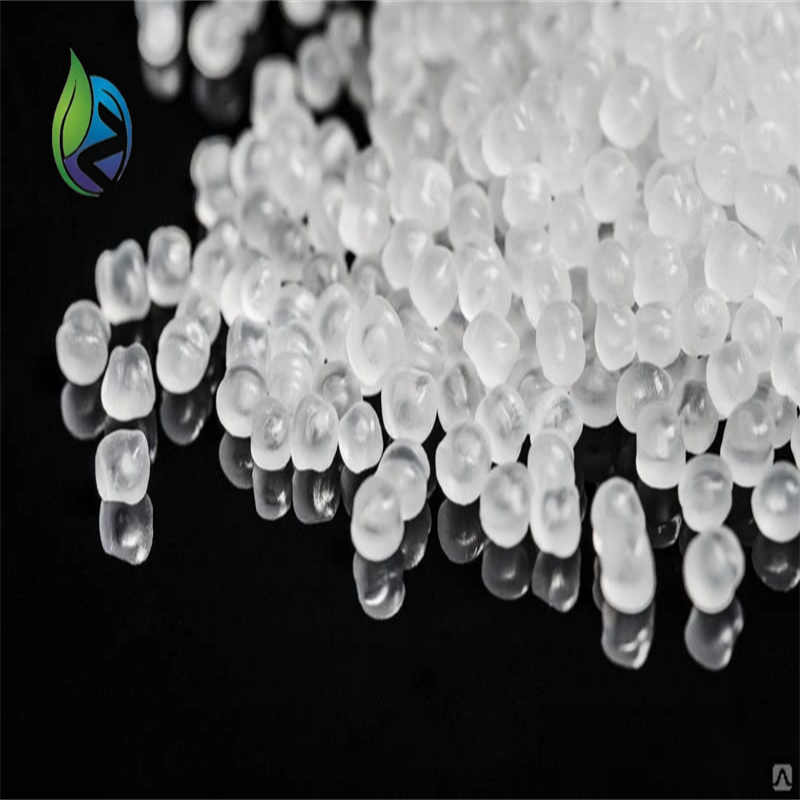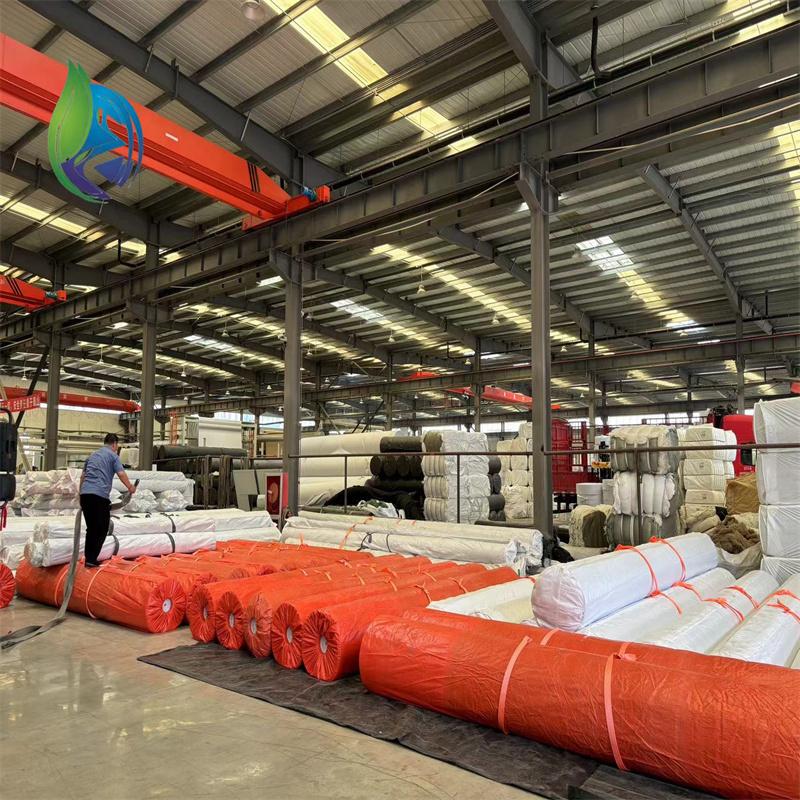Geomembrane Applied to Mines
Geomembranes, as a high-performance synthetic material, are playing an increasingly important role in mining engineering due to their excellent impermeability, isolation, and protective properties. They provide effective solutions for mine environmental protection and ecological restoration.
Support bulk ordering with favorable prices.
Support ODM/OEM.
The factory has stock and fast delivery.
Delivery Time: 10-20 working days
Minimum Order Quantity: 300 square meters
Payment Term: 30% T/T Deposit, 70% T/T Before Shipping
The mining industry faces growing pressure to operate sustainably and comply with strict environmental regulations. A critical solution in addressing these challenges is the geomembrane applied to mines. These synthetic liners act as impermeable barriers that control fluid movement in tailings ponds, heap leach pads, and waste containment areas. The use of geomembrane applied to mines has become a global best practice in modern mining operations.
What is a Geomembrane?
A geomembrane is a synthetic membrane liner or barrier, usually made from materials such as HDPE (High-Density Polyethylene), LLDPE (Linear Low-Density Polyethylene), or PVC (Polyvinyl Chloride). When geomembrane is applied to mines, it serves to prevent the leaching of toxic substances into soil and groundwater, ensuring environmental compliance and operational safety.
Benefits of Geomembrane Applied to Mines
The advantages of using geomembrane applied to mines are extensive, offering both environmental and economic benefits:
Leak Prevention
The primary role of a geomembrane applied to mines is to provide an impermeable barrier that prevents hazardous leachate from seeping into surrounding soil or groundwater.Chemical Resistance
Geomembranes are resistant to aggressive chemicals, including acids, heavy metals, and solvents commonly found in mining waste.Durability and UV Resistance
When geomembrane is applied to mines, it can withstand harsh weather, UV radiation, and mechanical stress, ensuring long-term protection.Cost-Efficiency
Though the initial investment may seem high, the use of geomembrane applied to mines greatly reduces future remediation costs and environmental liabilities.Improved Site Safety and Compliance
Regulatory bodies often mandate containment systems. The use of geomembrane applied to mines facilitates faster permitting and operational approval.
Applications of Geomembrane Applied to Mines
The geomembrane applied to mines is versatile and can be used in several critical areas of mining operations:
Heap Leach Pads
To ensure the safe leaching of precious metals from ore, geomembranes are laid at the base to prevent chemical infiltration.Tailings Ponds and Dams
Prevents seepage of slurry waste and supports structural stability of containment facilities.Waste Rock Dumps
Lining waste piles with geomembrane helps control drainage and manage acid mine drainage (AMD).Process Water Ponds
Geomembranes ensure that recycled water used in operations remains contained, minimizing water loss and environmental risks.Underground and Open-Pit Mining Water Barriers
In both deep and surface mining, geomembranes control water ingress and improve mine safety.
Types of Geomembranes Applied to Mines
When selecting a geomembrane applied to mines, material choice is critical:
HDPE Geomembrane
Most commonly used due to its high tensile strength, UV resistance, and chemical durability.LLDPE Geomembrane
More flexible than HDPE, suitable for uneven terrain.PVC and EVA Geomembranes
Easier to install in cold climates but generally less durable.
Installation Considerations
Proper installation is crucial for the success of a geomembrane applied to mines. Key factors include:
Subgrade Preparation: Smooth, compacted subgrade avoids punctures.
Seam Welding: Thermally bonded seams ensure a continuous, leak-proof barrier.
Quality Assurance (QA/QC): Field tests like vacuum box, air pressure, and spark testing validate seam integrity.
Expert installation and quality control dramatically enhance the performance of geomembrane applied to mines.
Environmental Compliance and Sustainability
Modern mining companies are required to follow international standards such as:
ISO 14001 Environmental Management
EPA’s RCRA Regulations (in the U.S.)
ICMM Sustainability Principles
Using geomembrane applied to mines helps achieve these certifications, positioning a mining operation as environmentally responsible and legally compliant.
Case Study Snapshot
In Peru’s gold mining sector, the implementation of geomembrane applied to mines in heap leach pads reduced cyanide leakage by over 95%, saving millions in fines and environmental damage costs. Similar success stories are emerging globally, proving the value of geomembrane applied to mines in real-world applications.
Choosing the Right Supplier
When sourcing geomembrane applied to mines, prioritize suppliers who provide:
ISO-certified products
On-site technical support
Custom fabrication for extreme climates or terrains
Comprehensive QA/QC documentation
Long-term relationships with reliable manufacturers ensure project safety and performance.
Conclusion
The strategic use of geomembrane applied to mines transforms environmental risk into operational strength. From reducing contamination to increasing regulatory compliance, this solution is indispensable in the future of sustainable mining. As mining operations expand globally, integrating geomembrane applied to mines is no longer optional—it’s essential.
Packaging:












